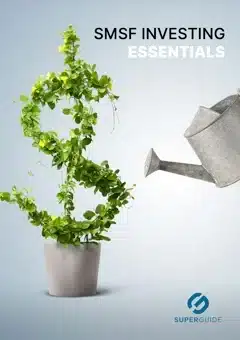In this guide
In-house assets remain one of the most common contraventions reported to the Australian Taxation Office (ATO) via auditor contravention reports. In most financial years, it ranks as the second most reported contravention.
It’s always a good idea to brush up on your understanding of the essential in-house asset rule, particularly if your fund has a significant investment in a single asset.
Keep in mind that your SMSF can hold no more than 5% of its total assets as in-house assets.
What is an in-house asset?
The SIS Act defines an in-house asset as an asset of the fund that is:
- A loan to, or an investment in, a related party of the fund
- An investment in a related trust of the fund
- An asset of the fund subject to a lease or lease arrangement between a trustee of the fund and a related party of the fund.
‘Related party’ also has a very specific definition under SIS law and is any of the below:
- A member of the fund
- A standard employer-sponsor of the fund
- A Part 8 associate of one of the above.
Part 8 associates include relatives, the other members of the fund, the directors of the corporate trustee or all individual trustees (if the SMSF is a single-member fund).
2026 SMSF calendar
Our free calendar includes due dates for important documents plus suggested dates for trustee meetings and other strategic issues for your SMSF.
"*" indicates required fields
If a member is in a partnership, then it also includes that partner (and their spouse or child) and the partnership itself. It also includes trusts, where the member and their Part 8 associates control the trust. The same applies to a company if a member and their Part 8 associates control the company.
Relative, under the SIS Act, refers to an individual’s parent, grandparent, brother, sister, uncle, aunt, nephew, niece, lineal descendant or adopted child of the individual or of his or her spouse; and the spouses of the individual and the individuals mentioned above.
Why is there a limit?
The purpose of the 5% limit is to manage the risks associated with holding in-house assets and portfolio concentration.
The main risk of having too large an allocation to an in-house asset is that the fund could be used for something other than providing retirement benefits to members or death benefits to the beneficiaries of members.
This would contravene the Superannuation Industry Supervision (SIS) Act and the sole purpose test.
There are serious penalties for breaching the in-house assets rules.
How it works
Exceptions to the rule
While the easiest way to avoid an in-house asset contravention might appear to be not investing in any asset that has anything to do with a related party, there are exceptions that recognise the unique benefits such investments can provide to SMSFs.
Business real property
The biggest exception is business real property. The SIS Act states that an in-house asset does not include real property subject to a lease, or to a lease arrangement enforceable by legal proceedings, between a trustee of the fund and a related party of the fund if, throughout the term of the lease or lease arrangement, the property is business real property.

Free eBook
SMSF investing essentials
Learn the essential facts about the SMSF investment rules, how to create an investment strategy (including templates) and how to give your strategy a healthcheck.
"*" indicates required fields
Business real property is real property used wholly and exclusively in one or more businesses (whether carried on by the entity or not) but does not include any interest held in the capacity of beneficiary of a trust estate.
However, in such cases, trustees need to be mindful of the potential expiry of a lease. The ATO has said that if a lease expires and is not renewed and the original lease does not include a ‘continuation clause’ or other similar provision, the lease ceases to be legally binding, and the leased asset could be considered an in-house asset of the SMSF.
Related ungeared trusts or companies
Another exception to the in-house assets test exists for units held in related trusts or shares held in related companies where that trust or company can meet certain restrictions.
Where each and every one of these restrictions is met, and continues to be met, then the SMSF investment in that entity is excluded from the in-house assets test.
The restrictions are:
- The entity does not lease assets to a related party unless the asset is business real property
- The entity does not have outstanding borrowings
- The entity does not have outstanding loans
- The entity does not invest in any other entity (shares in other companies, units in other trusts, etc.)
- No asset of the entity can be used as security
- No asset of the entity can be acquired from a related party unless it is business real property
- The entity cannot conduct a business.
As you can see, these related ungeared entities are heavily restricted in what they can actually do. Their real use is to be the legal owner of direct property.
Read more about investing in related trusts and companies.
The bottom line
The in-house asset limits are placed on SMSFs for good reason and responsible trustees would be well advised to keep them in mind when considering investments from related parties.
Supercharge your SMSF

"*" indicates required fields



Leave a Reply
You must be logged in to post a comment.